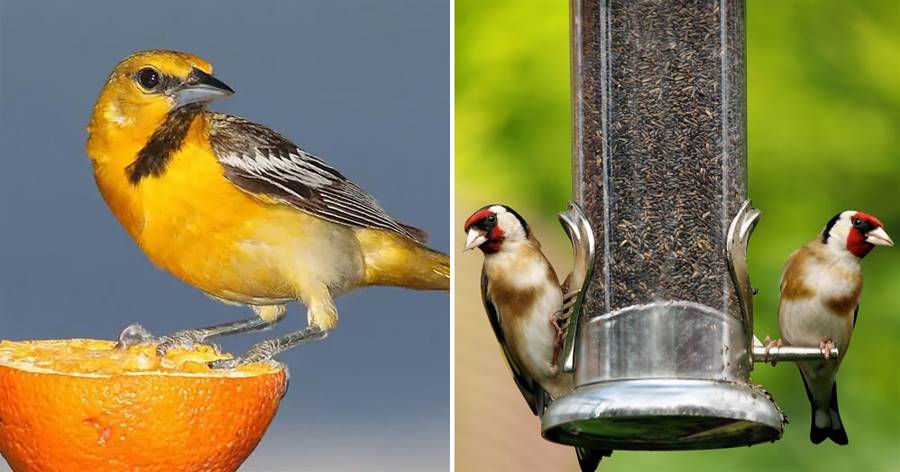

There are several reasons you may be wondering about what to feed birds from the kitchen. Perhaps you ran out of bird seed and you have a bunch of hungry cardinals and but you can’t get to the store until tomorrow.
Or maybe you have plenty of bird seed but you are looking to be a little less wasteful with your kitchen scraps.
Regardless of the reason, there are many everyday kitchen items that you probably didn’t know your backyard friends will relish. In this article I will go over some of those as well as some that you should avoid feeding them.
In addition I’ll talk about the benefits, the drawbacks, and the
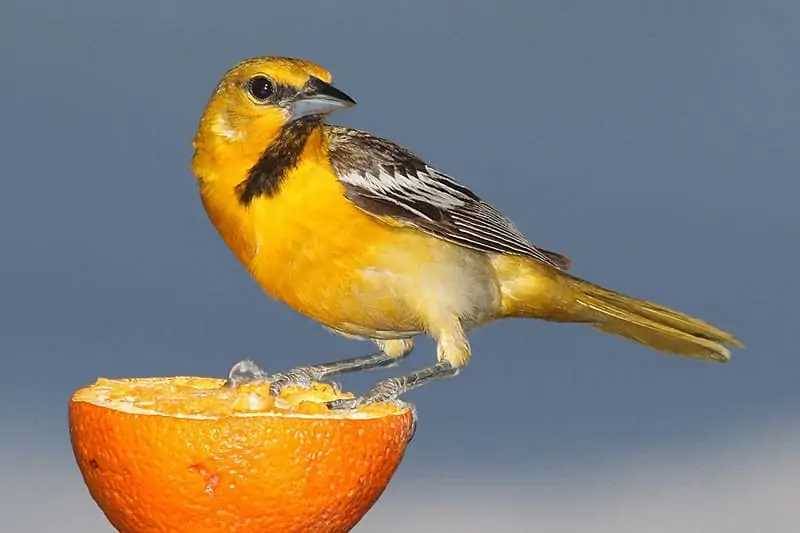
There are many birds that enjoy eating fruit. Having fruiting trees and shrubs, such as apple, pear, orange, blackberry and raspberry, will attract many birds such as orioles, mockingbirds, catbirds and sapsuckers.
ApplesGrapesOrangesBananasBerriesMelon, Pumpkin and Squash seeds (toss outside as is, or even better bake in the oven until dry and sprinkle on a platform feeder)RaisinsVeggies – birds actually have trouble digesting many raw vegetables, but peas, sweet corn and potatoes with the skin removed will be fine.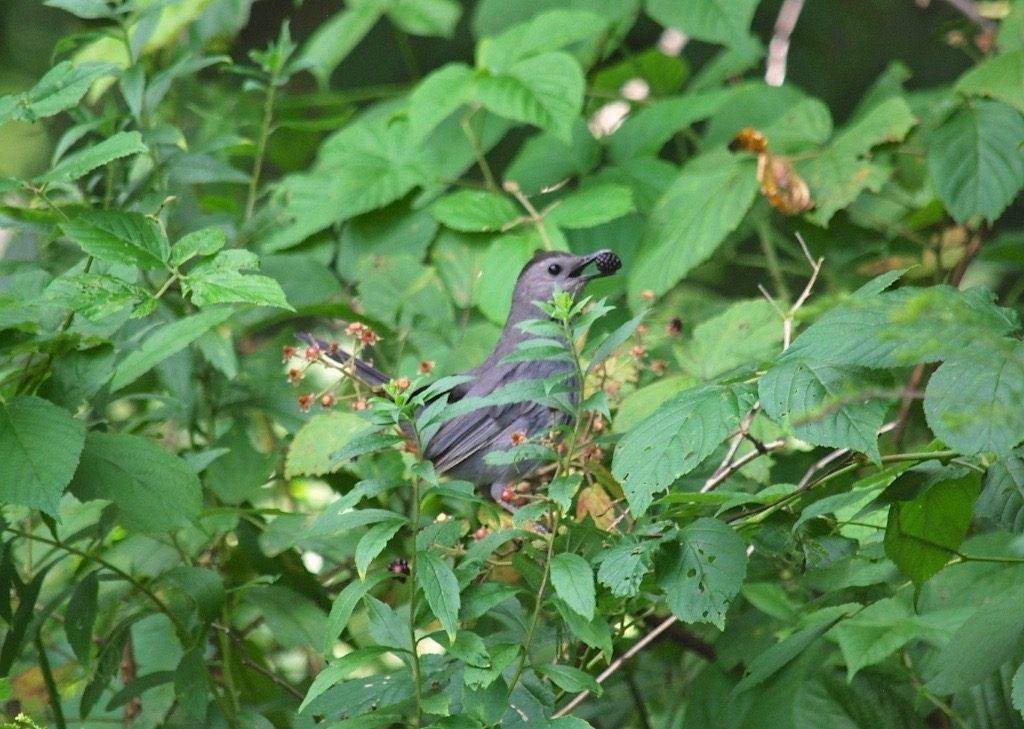
Perhaps it is the starch and carbs, but some birds really enjoy cooked pasta and rice. Make sure it is plain, without sauce or added salt. Also be sure to keep an eye on it for spoilage. Birds may also enjoy uncooked rice. If you’ve ever heard that it is bad to throw uncooked rice at a wedding because it will expand in a birds stomach and kill them, rest assured that is just a myth.
Foods from the meat and dairy category are best fed in the winter. They are foods that spoil easily, so the cold winter temperatures will keep them edible for longer.
Bacon – you’ve likely seen suet cakes available to purchase for birds, which are made with animal fat. Many birds love to use this fat as an energy source. Bacon grease can be collected and cooled in the refrigerator, then put out for birds to enjoy. You can even mix some bird seed in with the grease and then solidify. Mold into any shape you want and hang outside! Cheese – ok in moderation. Studies have shown that birds cannot digest lactose and may suffer the same stomach upset as a lactose-intolerant human if too much dairy is consumed.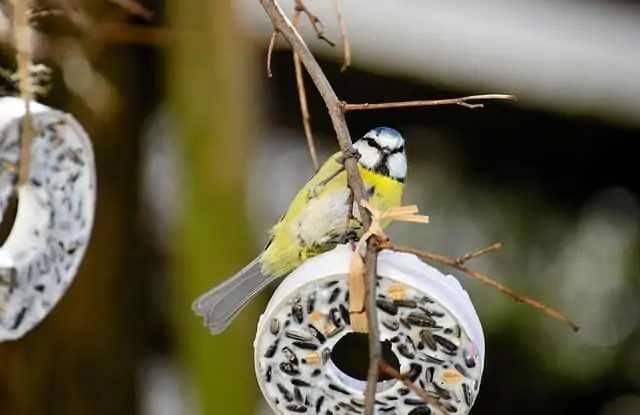
Leftover nuts gone stale? Chances are your backyard birds will still love them. Plain is always best, try to avoid salted or seasoned nuts.
AcornsAlmondsHazelnutsHickory nutsPeanutsPecansPine nutsWalnutsA typical tube feeder or isn’t going to be ideal for feeding birds kitchen scraps. They are built for bird seed and just aren’t going to be the best choice for putting pieces of food in that aren’t as small as , safflower, millet and other small seeds.
Something like this from Woodlink that you can get on Amazon would work great. There’s plenty of room for larger items such as apples (seeds removed) or other items on the list. It’s easy to clean off as well.
If you are looking to stick to just sliced fruit, something simple such as the
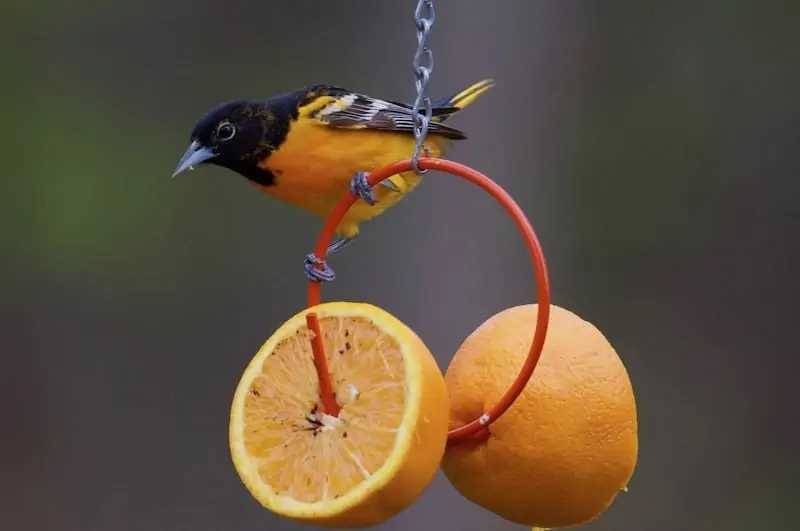
Feeding your backyard birds kitchen scraps can have benefits that regular bird seed does not. Especially in the and during migration, kitchen scraps such as bacon grease, cheeses, and fruits can provide birds with essential nutrients that they need, and a more varied diet.
During these periods, birds require more energy which includes food sources that have higher fat and protein contents.
Feeding birds from the kitchen has its advantages and can be beneficial for birds but does have some drawbacks. These types of foods attract several types of pests including raccoons, opossums, and , to name a few.
In addition, meats and fruits can quick rot and become rancid if they aren’t eaten quickly. You will have to keep a close watch on these types of foods if you leave them out, and remove them at the first signs of spoilage.
If this topic interests you and you want to find out more about different types of foods you can feed, a book that is highly recommended on Amazon is by Sally Roth.
